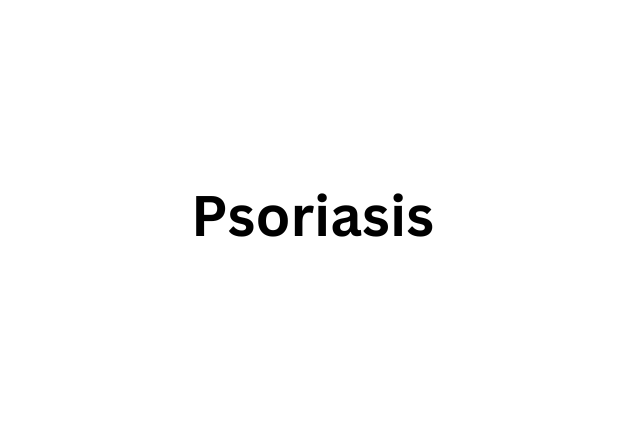What is Psoriasis?
Psoriasis is an incurable autoimmune disease. Although the skin is mainly affected, it can also affect nails and bones. 1-3 percent of the population is thought to be affected by the disease which can appear on any part of the body.
There are five main types, which include plaque, guttate, inverse, pustular, and erythrodermic. Plaque psoriasis is by far the most common affecting approximately 85-90% of people.
Symptoms
Plaque psoriasis appears as red, raised, itchy plaques on the skins surface with a white-silvery scale. It may be painful or itchy and commonly appears on the elbows, knees, shins, scalp and back.
Guttate psoriasis is the second most common type of psoriasis. It often starts in childhood or young adulthood. It appears as hundreds of small, red, separate spots on the skin which appear on the trunk and limbs.
Inverse psoriasis is a painful and a particularly difficult type of psoriasis because it forms in the body’s skin folds, such as the genitals, armpits and under the breasts or buttocks.
Pustular psoriasis is an uncommon form of psoriasis. It appears as clearly defined, raised bumps that are filled with pus-a white, thick fluid composed of white blood cells.
Erythrodermic psoriasis presents as red dry skin all over the body. It generally appears on people who have unstable plaque psoriasis. This type of psoriasis is rare, but severe complications can be fatal.
Causes and risk factors
Multiple risk factors are suspected to increase the likelihood of this condition. Among them are genetics, immunity, and environmental triggers.
Genetics is said to play a significant factor with approximately one-third of patients having a family history.
An abnormal immune system response is thought to play a significant role in developing the disease. Overstimulation of skin cells creates a sequence of pathological events in psoriasis. Skin cells are replaced every 3–5 days in psoriasis, rather than the usual 28–30 days.
Patients may notice environmental triggers that cause acute flare-ups of the disease. Triggers include certain medications such as beta-blockers, infections such as strep throat, changes in weather, skin injury, and stress.
Smoking and alcohol are also thought to contribute to or worsen the condition.
How it is diagnosed
Psoriasis is diagnosed by a family physician or dermatologist by careful inspection of the skin and nails and accessing a patient’s full medical history.
A skin biopsy may be completed if the diagnosis is uncertain. Blood tests may rule out other possible causes of the disease. Fungal cultures may be completed to distinguish psoriasis from other conditions such as candida.
Complications
Psoriasis is an autoimmune disease and individuals diagnosed are prone to other autoimmune diseases such as Crohn’s disease or celiac disease.
People with psoriasis tend to have a higher incidence of cardiovascular disease, higher blood pressure, and type 2 diabetes compared to the rest of the population. Certain eye disorders such as conjunctivitis, blepharitis, and uveitis also tend to be more common. Psoriasis can lead to psoriatic arthritis, a complication that can cause joint damage and a loss of joint function, which can be debilitating.
The psychological implications of psoriasis should not be underestimated. These can include impaired social and emotional well-being can cause distress, frustration, depression, and weight gain.
Treatments
Treatment depends on the severity of the disease. There should be an individualized approach to finding the right treatment, which may involve some trial and error.
Topical therapies are applied directly to the skin and are used in smaller areas of the body. They come in the form of creams, lotions, ointments, and gels.
Topical therapies include steroids, coal tar, anthralin, Vitamin D analogues such as calcipotriol, calcineurin inhibitors such as tacrolimus and pimerolius, and the Vitamin A derivative tazarotene.
UV light therapy and systemic medications are generally used when larger areas of the body are involved and are reserved for more severe cases.
Light therapies included UVA or UVB light rays and are used in combination with other therapies (topical or systemic). Light therapy may increase your incidence of skin cancer, therefore it is important to receive regular skin examinations.
Systemic medications, including oral medications or injections, are reserved for severe cases of psoriasis. Oral medications include methotrexate, cyclosporine, retenoids (Vitamin A derivitives), antimalarials, pencillamine, sulfasalazine, entanercept, infliximab and adalimumab. Intramuscular injections of gold are also used.
Non-medical treatments include physiotherapy, exercise, hydrotherapy and hot or cold thermotherapy. These therapies are implemented to relieve pain, swelling and maintain and improve joint function.
Written by: VanoraD’Sa MD
References
- Langley, Richard. (2010). Psoriasis: Second Edition. Toronto Onatrio: Key Porter Books Ltd.
- Papp, Kim Alexander., Lass, Jenny. (2011). The Canadian Guide to Psoriasis. Mississauga, Ontario: John Wiley and Sons Canada, Ltd.



